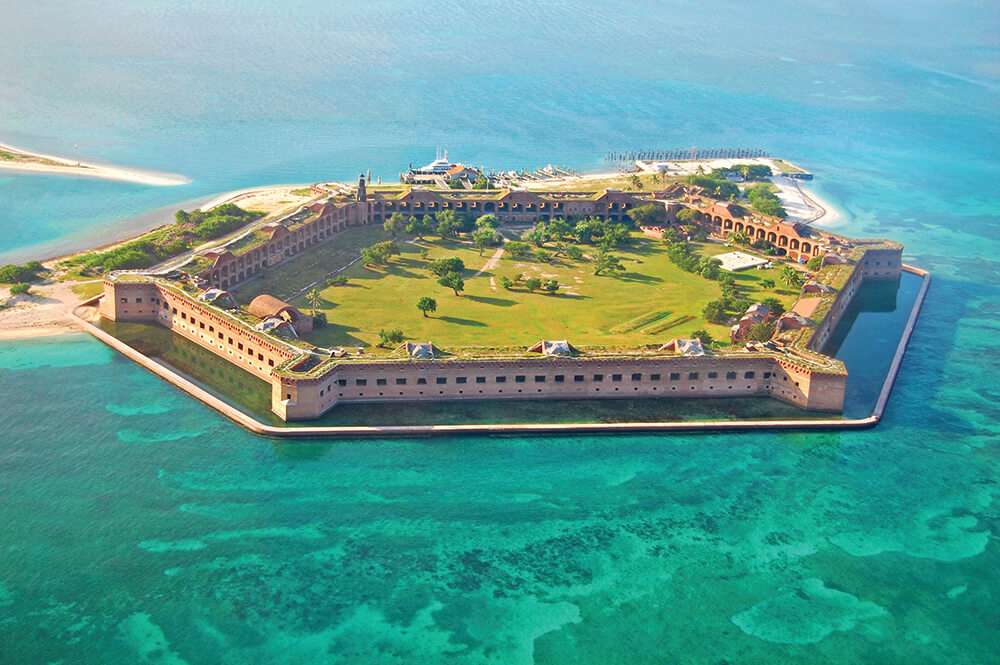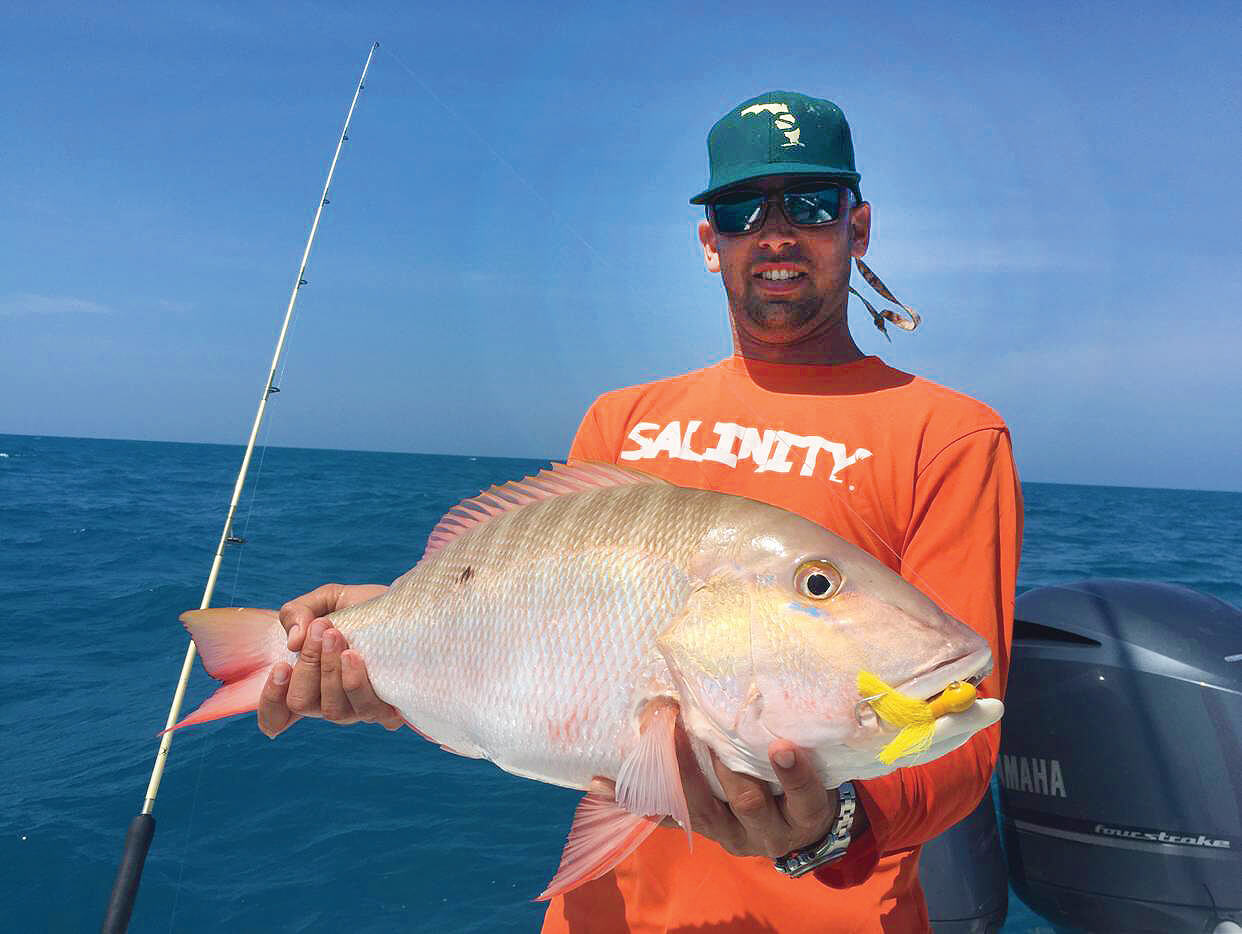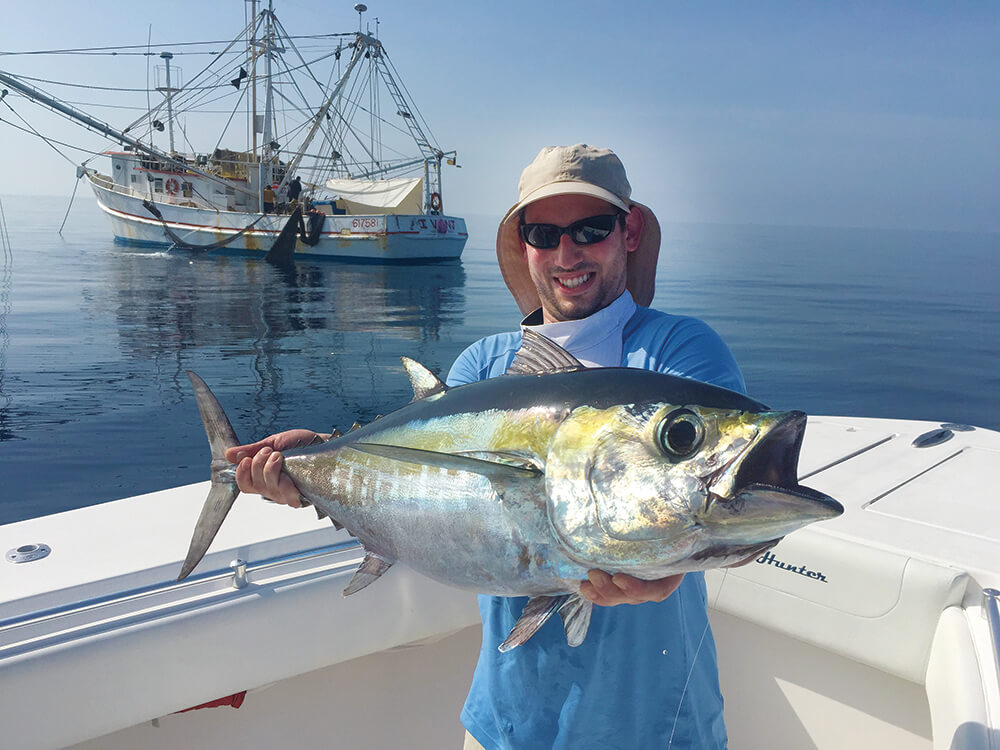By Capt. Mike Weinhoffer
The Dry Tortugas are a group of seven small islands 67 miles west of Key West. Encompassed within a 100-acre national park, the islands are best known for Fort Jefferson, a 19th century brick fort on a tiny island in the middle of the ocean. The history of the Dry Tortugas is pretty amazing, and so is the fishing.
Fort Jefferson was built to protect the busiest shipping lanes between the Gulf Coast and the eastern seaboard. During the civil war, the fort was used by the Union army to disrupt shipping to confederate forces. During that same period, the fort was also used as a prison.
The most famous prisoner held at the fort was Dr. Samuel Mudd, who mended John Wilkes Booth’s leg. In 1874, the army abandoned the fort and it was used solely as a coaling station for resupply. The Dry Tortugas received their name because there was no water on the island and the turtles prevalent on the beach made a good food source.
The fort itself was never finished completely, but it is a testament to determination. All the building materials needed to build the fort were brought down by barge. The scope of it doesn’t hit you until you sit in the archways of the fort and think back in history of them hauling 14 million bricks 70 miles from Key West and roughly 200 miles from the mainland out in the middle of the ocean. Those arches of bricks often are made of six different angles meeting together to make the complex ceiling. A walk around the fort and climbing the walls is a must for anyone traveling to Dry Tortuga. Plan on just relaxing and watching the sunset from inside the fort.
For anglers, the true magic happens when you go fishing off Fort Jefferson. The waters surrounding the fort are crystal clear. Often, when fishing in 30 or 40 feet of water you can watch groupers swim out of a hole and eat your bait. Whether you decide to fish K Buoy on the north side of the fort for yellowtails, East Key for groupers and mutton, or the south side of the fort for big groupers or kings, it is magical.
The fishing at the fort is like going back 30 years in time and catching fish of yester-year. When you see a boat come back from the fort with its catch, you can tell where they have been without even asking. The fish are larger and more colorful, and there’s just more of them. I think the remoteness of the fort has kept the fishing pristine. You know the king fishing at the fort is amazing when you see tournament teams run hundreds of miles to catch a fish there to win a tournament. I think there have been more winning kingfish caught at the fort than any place else, but the fort is known for its bottom fishing.
Whether you decide to bottom fish on the Atlantic side of the fort or the Gulf of Mexico on the north side, be ready for some awesome action. On the Atlantic side, you can anchor down and chum up the yellowtails on the reef edge or drift fish the different drops. These drops are bottom contours that often only change by a couple of feet, but those edges hold myriad fish.
The 204 drop or the 250 drop edges are loaded with fish, but you have to use the right tackle. I prefer braid when bottom fishing. The difference with braid when you are fishing deep is it takes half the weight to get down, and you can feel exactly what is going on with your bait. The amount of weight will vary every day, you want to make sure you have enough weight to hold bottom; you do not want your line scoping out away from the boat. When the line scopes out, you have to put more and more line out to find the bottom. Ideally, you want your bait a foot off the bottom. If you scope out, you also have a great tendency to hang the bottom. It can often be hard to get the feel for it for new anglers.
Bait options are endless, whether you fish live bait (pinfish, pilchards, mullet) or dead bait, there is a time for each. There are days when they only want dead bait like bonita strips, ballyhoo or squid, and they will out fish live 10 to one. Then sometimes jigs with tails or ballyhoo are the secret. The best advice I can give is take it all: dead bait, live bait and artificials. It is a long way to the nearest tackle shop. Don’t be afraid to try different things at different locations. When it comes to jigs, I prefer white and everything from 1-ounce to 10-once. The current can be still, or it could be flying along at 3 knots.
I like to drift fish at the fort. There is so much bottom to cover and so many places I want to get to that I rarely anchor. A perfect drift for me is 1 1/2 to 2 knots. If there is no current, typically there are no fish. Different times of day are better in different areas. I believe the fish migrate during the day from south to north or vice versa depending on where you are.
When you setup a drift over a migration, you will know it instantly by the constant action.
When you look at a chart of the Dry Tortugas, your imagination runs wild with all the great bottom contours to fish and different spots that just look fishy. Be mindful of the closed areas and restricted areas around the fort; the fines are expensive.
The best part of fishing the Dry Tortugas is exploring a new fishery that is so widespread and alive with fish. You can expect to come home with stories and photos of a lifetime. So take the time to go down West and experience history. Visit the Dry Tortugas web page for more information (www.nps.gov/drto/index.htm).
Contact Capt. Mike Weinhoffer and Key West Florida Fishing through their website www.Keywestfloridafishing.com or call 305-395-3474.


